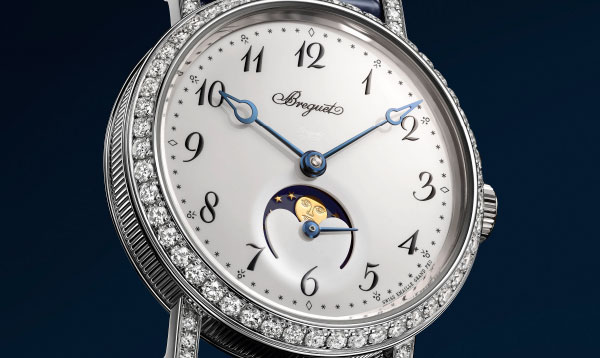
A real precision-timing powerhouse, the RM031 Haute Performance features two balance-springs among its other technical solutions.
The Millenary Quadriennium uses the Audemars Piguet escapement and a double balance-spring.
The balance-spring works with the balance-wheel to regulate the rate of the watch. Together, they form the source of precision. By definition, a single balance-spring is enough and yet several brands use two. Not two separate escapements, as in the case of a double tourbillon, but indeed two balance-springs coupled with a single balance-wheel. Why? Because an escapement with a double balance-spring delivers a more regular, stable and sustainable rate than one with a single regulating spring.
Stability
The first beneficial effect of double balance-springs is that their oscillations are more centered. That might seem like a detail, but this topic is essential. A balance-spring changes shape constantly, successively contracting and expanding concentrically in step with the oscillations of the balance-wheel. This means its center of gravity shifts. It causes the balance-staff to move in its pivots, thereby generating considerable friction and loss of energy that have been a major cause of concern for watchmakers over many centuries. One can significantly alleviate this friction by means of two balance-springs when they are set against each other, meaning fitted top to tail. When the first contracts, the other expands; and when the center of gravity of one of them shifts to the right, the other moves to the left. The two balance-springs thereby cancel out their respective variations, which means that the balance-staff rubs far less.

The Galet Tourbillon by Laurent Ferrier uses two balance-springs to achieve record-breaking chronometry.
The Royal Oak Double Balance Wheel Openworked innovates with two balance-wheels set against each other on the same axis.
Endurance
The second benefit of this double hairspring approach is that precision is less affected by shocks. The latter shake the balance-spring and balance-wheel, which must rapidly regain a regular rate. This capacity to bounce back to the correct frequency is known as regulating force. With the energy derived from the two springs, the balance-wheel is more rapidly restored to working order and the chronometry is less perturbed.
Twin natures
These chronometry factors can only work effectively on one condition : the two balance-springs must feature the same characteristics, the same shapes to the nearest micron, in order for the errors of one to cancel out those of the other. H. Moser & Cie was the first brand to popularize this process. The two balance-springs stem from the same metal casting, the same spool of wire ; they are coiled against each other and fired together. They are identical twins.

On its self-winding tourbillon movement, H. Moser & Cie uses a double balance-spring, a field in which the brand played a pioneering role.
In addition to a diamond lever and lever wheel, Leroy leverages the double balance-spring principle by means of its sister company specializing in escapements and balance-springs.
The balance-spring with double balance-wheel in silicon of the Breguet Classique Chronométrie 7727.
Popularity
This principle has been emulated, often in extremely refined models. Leroy uses escapements produced by its sister company MHVJ, which makes balance-springs, and knows how to pair them in an ideal way. The Classique Chronométrie by Breguet, which oscillates at a rate of 10 Hz, is equipped with such twinned silicon balance-springs featuring highly sophisticated terminal curves. Audemars Piguet has even taken things to the next level with its new Royal Oak Double Balance Wheel. Two balance-wheels, each with its own hairspring, are mounted on the same staff but work in opposition, thereby procuring the same benefits as a double balance-spring. They must be paired and adjusted like twins, which is a very tough challenge. The brand claims a massive 30% increase in precision compared with a conventional escapement. So doubling up can clearly take all manner of new forms…






